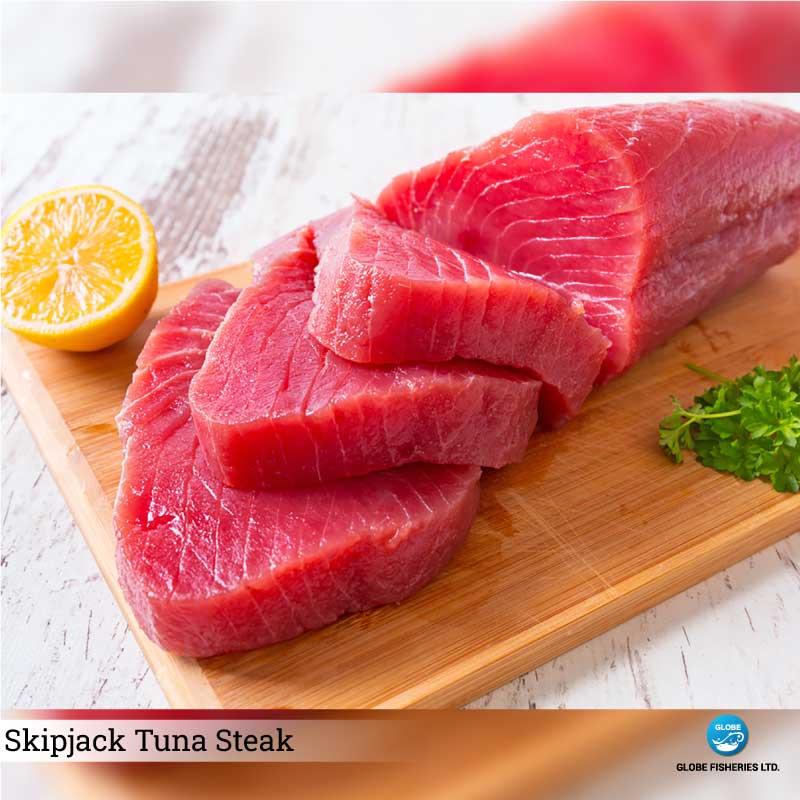

| Item | Description | Pack | Size |
| Skipjack Tune Whole | Whole | IQF | BLOCK |Semi IQF | 500-700g | 700-1000g | 1000g up | 1.8-3.4kg |
| Skipjack Tuna Gutless | Organs removed | IQF | BLOCK |Semi IQF | 500-700g | 700-1000g | 1000g up | 1.8-3.4kg |
| Skipjack Tuna Fillet | Boneless Meat | IQF | BLOCK |Semi IQF | 200-300g | 300-400g | 400-600g | 600-800g | 800g up |
Katsuwonus pelamis is commonly known as Skipjack Tuna, is a medium-sized perciform fish in the tuna family, Scombridae. It is otherwise known as the balaya, cakalang, arctic bonito, mushmouth, oceanic bonito, striped tuna, or victor fish. It grows up to 1m in length. It is a cosmopolitan pelagic fish found in tropical and warm-temperate waters. It is a very important species for fisheries.
Skipjack Tuna is a streamlined, fast-swimming pelagic fish, common in tropical waters throughout the world, where it inhabits surface waters in large shoals, feeding on fish, crustaceans, cephalopods, and mollusks. It is an important prey species for sharks and large pelagic fishes and is often used as live bait when fishing for Marlin. They have torpedo-shaped bodies with dark blue or purple backs and silver on the lower sides and belly. They have 3-5 prominent dark bands running along the length of the lower sides. Skipjack Tuna mostly have no scales, except on the lateral line and the corselet. It commonly reaches fork lengths up to 80 cm and a weight of 8–10 kg. Its maximum fork length is 108 cm and its maximum weight is 34.5 kg. Aging Skipjack Tuna is difficult, and the estimates of its potential lifespan range between 8 and 12 years.
Skipjack Tuna is a batch spawner. Spawning occurs year-round in equatorial waters, but it gets more seasonal further away from the equator. Fork length at first spawning is about 45 cm. It is also known for its potent smell. It is an important commercial and game fish, usually caught using purse seine nets, and is sold fresh, frozen, canned, dried, salted, and smoked.
Skipjack Tuna has a mild, meaty flavor. The meat is bright red when raw and turns brown-grey when cooked. It is the species most commonly used in canned tuna. Skipjack Tuna is very popular in the Asia and East Europe market.